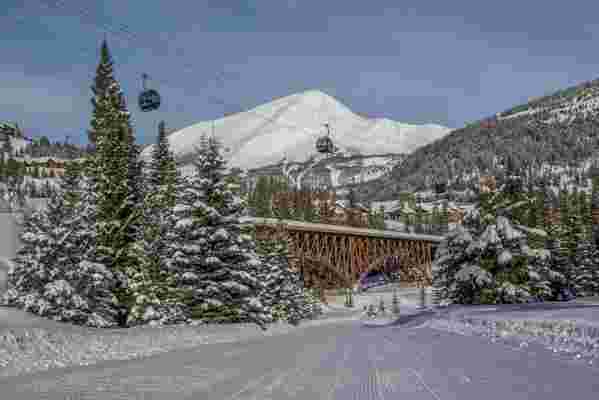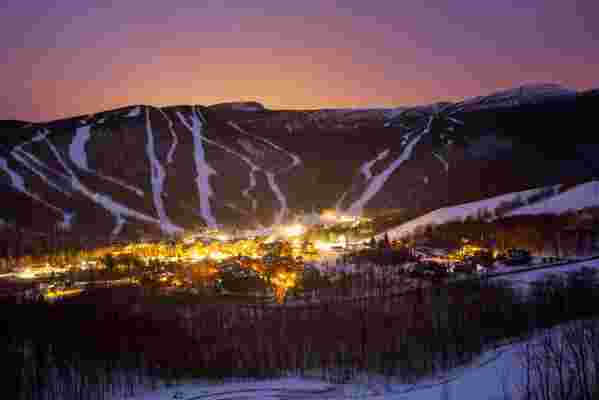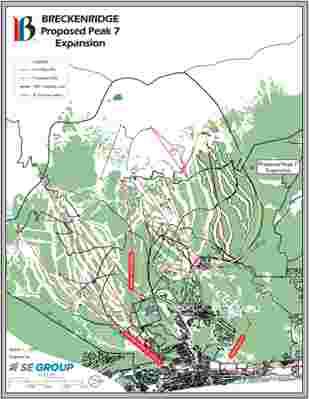Sure, nature makes the mountains. But man makes them skiable. That’s easy enough to forget when you’re riding up the lift and the trails below seem obvious, like they’re exactly where they were meant to be.
In reality, though, creating a ski resort takes years, sometimes decades, of work—landscape design on steroids—that almost never goes according to plan. “Something on the ground always looks different,” says Pete Williams, a senior associate planner with SE Group , a design firm that’s worked with some of the country’s most popular mountain resorts to expand terrain—including Colorado’s Breckenridge, Wyoming’s Jackson Hole, and Idaho’s Sun Valley Resort—and build from scratch—including Utah’s Deer Valley and British Columbia’s Revelstoke. “It’s that moment you’re riding up the mountain on a snowmobile and someone calls out ‘uh-oh’”—code for an unexpected 20-foot-deep canyon, a rock the size of a small house, or a certain type of tree that would make permitting difficult.

SE Group helped the Yellowstone Club in Big Sky, Montana, erect a new gondola, which debuted this season as part of a multiphase project that will also see the construction of a new base village.
While technology has improved since SE Group principal Chris Cushing’s father, Joe, pioneered ski resort design in the U.S. and around the world in the mid-1960s, the design process has largely stayed the same. The first step is to find out what, exactly, you’re working with. After a site visit, planners will create a topographic map, a process done with the help of satellite imaging, to calculate slope and solar radiation levels and identify most—though not all—obstacles to a build-out. Then they create an initial design, which is almost always adjusted (see: rock the size of a small house), and often for the better. After SE Group planners mapped terrain at Sun Valley in anticipation of replacing an old lift, they realized that a simple shift in location to the base terminal would open up a whopping 400 more acres of skiable mountain, an expansion currently under way.

At Stowe Mountain in Stowe, Vermont, a series of updates over several decades has included a new multiseason base village and site planning for the just-opened Spruce Peak residences.
While planning always aims to work with the natural mountain gradations, adjustments must be made to suit the market—especially as competition increases and climate change has rendered the ski season shorter. Some 60 percent of the world’s skiers are at the intermediate level, says Cushing, but nature is rarely so middling. As a result, much of the design process entails working to make trails easier—by making them wider and with fewer sharp corners—or harder—by making them narrower, curvier, more densely vegetated. Climate change has also led to narrower runs (wider ones are more expensive to maintain snow cover) and fewer south-facing, sun-exposed trails.

All expansion projects begin with a site plan showing where potential trails could go; SE Group created this one in 2001 for Breckenridge Ski Resort in Colorado, though construction on the project, Peak 7, wouldn’t begin for another eight years.
Improvements to the lift network can also help create more trails, and with fewer lifts (and shorter lift lines) besides. When Cushing and his team began working with Jackson Hole in the 1980s, they were tasked with helping expand its reach from an experts’ mountain to something more family-friendly. “Jackson is a gnarly mountain,” says Cushing. “We couldn’t change that. But we could change where the lifts started and ended.” Skier visits have more than doubled since.
The beginnings of an intermediate slope at Breckenridge.
Quality of resort life matters, too. While good skiing is paramount, hotel, restaurant, and circulation patterns—ease of getting from one part of the resort to the other with minimal traversing or schlepping of your stuff—are also critical, and increasingly so as more travelers want to visit resorts without the need for a car. At Deer Valley, SE Group took those factors, as well as climate change, into consideration when deciding to create a new base village further up the mountain than is currently necessary—as Cushing puts it, there may be snow there now, but just wait ten years.
Sun Valley’s Roundhouse gondola dates back to 1939. SE Group is in the process of helping the resort add 380 new acres of trails.
By far the biggest shift in ski resort design has been the almost mandatory four-season approach. As Claire Humber, SE Group’s director of resort planning and design, puts it, “having a business that operates one season out of four is just not a good model.” What’s more, there are fewer than ten million skiers in the country, but more than 350 million people. “So who does it make sense to be selling to?” she asks. “Skiers? Or just anyone who likes to get outside and have fun?”

Leave a Reply